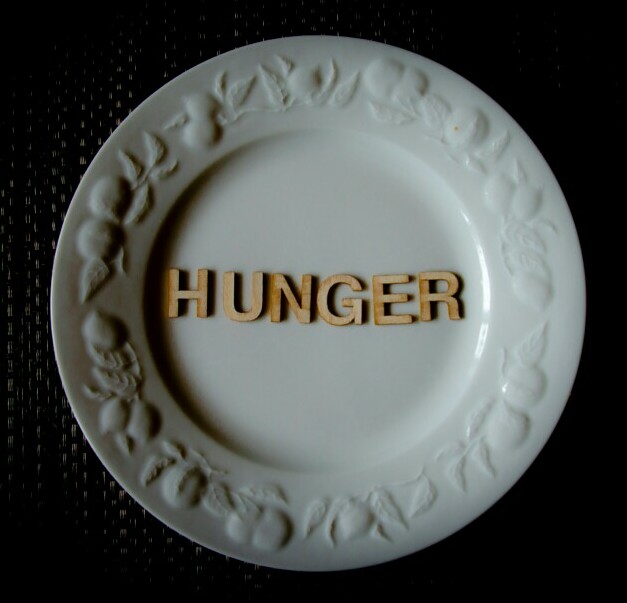If you haven’t heard about Intermittent Fasting (IF), it is a way of eating that focuses on limiting your time to reduced hours. This is often done with the 16:8 method, where you have an 8-hour’ eating window’ during which you consume all your daily calories and a 16-hour’ fasting window’ during which you abstain from food.
Intermittent Fasting (IF) is not just a modern trend but a practice with ancient roots that has resurfaced today due to its numerous benefits, backed by scientific research. Studies have shown that these include reducing inflammation, aiding in weight loss, and extending lifespan.
One of the biggest questions about Intermittent Fasting among beginners is how to curb hunger during fasting.
Not adequately dealing with fasting hunger is a common reason people might overeat during their eating window or not find success with intermittent fasting.
Rest assured, this article will delve into practical ways of curbing fasting hunger, equipping you with the confidence to achieve this. But first, let’s better understand the hunger that occurs in intermittent fasting.
Grasping The Concept Of Hunger During Intermittent Fasting
Did you know that it can be easy to confuse hunger for thirst? Yes, sometimes it can be easy to eat because you think you’re hungry when you’re just thirsty. This is because the same part of your brain interprets hunger and thirst.
Understanding the difference between hunger and thirst can be challenging but is crucial to mastering Intermittent Fasting. By learning to distinguish between these signals, you gain a sense of control over your body’s needs. Thirst can be quickly overcome during fasting, while true hunger can ruin your fast. This knowledge empowers you to decide when and what to eat.
Here are some crucial differences between hunger and thirst:
- Location of Sensation: True hunger often originates from the stomach and is accompanied by physical sensations like stomach growling or feelings of emptiness. In contrast, thirst typically manifests as a dry mouth or throat.
- Timing: Hunger tends to develop gradually over time, while thirst can occur suddenly, especially if you’ve been engaging in activities that cause dehydration, such as exercise.
- Response to Food or Water: Eating food usually alleviates hunger, while drinking water quenches thirst. If you feel hungry but eating doesn’t satisfy you, and you still feel a sensation of emptiness, you might be thirsty.
- Other Symptoms: True hunger might be accompanied by irritability, difficulty concentrating, or decreased energy levels. Thirst may be accompanied by symptoms of dehydration, such as headache, dizziness, or dark-colored urine.
- Cues from the Body: Pay attention to your body’s signals. Sometimes, thirst can be mistaken for hunger, especially if you haven’t consumed enough fluids throughout the day.
Thirst is not the only thing that can be confused with hunger. Let’s move on.
True Vs. Fake Hunger

You can also confuse true physiological hunger with psychological cravings or your brain telling you you’re hungry when you aren’t. This can happen when you eat based on boredom, to fill time, or when you’re stressed and not paying attention to your physiological cues. To avoid this, try to identify the triggers for your cravings and find alternative ways to address them, such as engaging in a hobby or practicing relaxation techniques.
When you’re used to mistaken psychological cravings for true hunger, you might encounter significant challenges while fasting because you think you need to eat when your body is fine. This can also result in overeating during your eating window to avoid those sensations in your next fast.
Here are some essential differences between true hunger and psychological cravings:
- Physical vs. Emotional Origin: In Intermittent Fasting, ‘true hunger’ is a physiological response triggered by the body’s need for nourishment and energy. It’s typically associated with bodily sensations like stomach growling or feelings of emptiness. ‘Psychological cravings, ‘on the other hand, stem from emotions, habits, or environmental cues rather than genuine physical needs. They often involve a desire for specific foods or flavors, even when the body doesn’t necessarily need nourishment. Recognizing these differences can help you make informed decisions about when to eat during your eating window.
- Timing and Context: Again, true hunger tends to develop gradually over time and is usually related to the body’s natural hunger cues, such as the passage of time since your last meal. Psychological cravings, like thirst, can sometimes arise and may be triggered by external factors like stress, boredom, social situations, or exposure to food-related cues like advertisements or smells.
- Response to Food: True hunger is typically satisfied by eating a balanced meal that gives the body the nutrients it needs. In contrast, psychological cravings may persist even after eating, as non-physical factors often drive them. Psychological cravings usually involve a desire for foods high in sugar, fat, or salt rather than nutrient-dense options.
- Physical Symptoms: True hunger may accompany symptoms like fatigue, irritability, difficulty concentrating, or decreased energy levels. Psychological cravings, on the other hand, may be more closely linked to emotional states like stress, anxiety, or sadness and may not necessarily be accompanied by physical symptoms.
- Temporary vs. Persistent: True hunger typically subsides once the body’s nutritional needs are met. At the same time, psychological cravings may persist or recur over time, mainly if the underlying emotional triggers are not addressed.
Now that we’ve covered the basics of hunger during intermittent fasting let’s move on to practical strategies for managing it. These include staying hydrated, consuming high-fiber foods, and practicing mindful eating. But before we do, let’s discuss how to prepare your body and mind for fasting, which is equally important.
Preparing Your Body and Mind for Fasting
Remember, Intermittent Fasting is not just about limiting your eating time. It’s about taking care of your body and mind. By taking the proper nutrients, you can avoid the sensation of true hunger until your next eating window. This self-care approach helps you feel nurtured and supported during your fasting journey.
The first step in preparing your body and mind for fasting is gradually reducing your meal frequency and easing into your fasting window. This practical approach minimizes potential side effects and makes the transition more manageable and sustainable for your lifestyle. It’s a reassuring way to start your Intermittent Fasting journey.
Here’s how you can gradually ease into fasting:
- Start with a Balanced Eating Pattern: Establish a balanced eating pattern with regular meals and snacks throughout the day before transitioning to intermittent fasting. This helps ensure your body receives adequate nutrition and energy to support your activities.
- Delay Breakfast: If you typically eat breakfast soon after waking up, try gradually delaying your first meal by 30 minutes to an hour. This allows your body to become accustomed to more extended periods without food.
- Extend the Overnight Fast: Once you’re comfortable delaying breakfast, gradually extend the fasting period overnight. For example, if you typically eat dinner at 8:00 p.m., try pushing your dinner time earlier by 30 minutes to an hour each day until you’re satisfied with the duration of your overnight fast.
- Experiment with Skipping Meals: As you adjust to a longer overnight fast, experiment with skipping one meal, such as breakfast or lunch, on occasion. Choose a day when you have fewer commitments or distractions to tune in to your body’s hunger signals and assess how you feel without that meal.
- Implement Time-Restricted Eating Windows: Once you feel comfortable skipping meals occasionally, gradually implement time-restricted eating windows, such as the popular 16/8 method. Start fasting for 12-14 hours overnight and progressively increase the fasting window by an hour or two until you reach your desired fasting duration.
- Listen to Your Body: Pay attention to how your body responds to changes in meal frequency and fasting duration. If you experience significant discomfort, fatigue, or other adverse effects, slow the progression and give your body more time to adapt.
- Stay Nourished: Focus on nutrient-dense foods that provide essential vitamins, minerals, and macronutrients to support overall health.
- Focus on Mindful Eating: Mindful eating involves paying full attention to the experience of eating and being present in the moment without judgment. An example is eating without distractions, such as television or the phone.
Remember that transitioning to intermittent fasting is a gradual process, and adjusting your approach based on how your body responds is okay. Be patient with yourself and trust that your body will adapt over time.
Next, we will look at keeping up with your hydration and how that will help you curb your hunger in the next section.
Hydration: The Key to Controlling Appetite

Earlier, I mentioned that the sensation of thirst can often be confused with the feeling of hunger. Proper hydration helps you avoid that mix-up while fasting. Even during your eating window, hydration can help you avoid eating when you aren’t hungry.
During fasting periods, drinking plenty of water can help reduce hunger pangs. Water temporarily fills the stomach, which can help reduce feelings of hunger. This physical sensation of fullness can signal to the brain that you’re satisfied, potentially curbing hunger pangs.
Using herbal teas and black coffee can also keep you hydrated and help you manage cravings by controlling your appetite. Both herbal teas and the caffeine in black coffee have been shown to help reduce hunger pangs and appetite.
We also know that hunger can be confused by psychological cravings. Proper hydration can also help with this by controlling your appetite. Herbal teas come in various flavors, from soothing chamomile to invigorating peppermint, to satisfy your taste buds without adding calories. The caffeine in black coffee can enhance mental alertness and focus, which may help distract you from cravings or hunger sensations during fasting periods.
However, remember to avoid calories while fasting. Avoid adding sugar, milk, cream, or other calorie-containing ingredients to maintain the fasting state.
Check this out if you want to learn more about hydration and Intermittent Fasting.
Next, we will talk about adjustments you can make to your daily routine to help curb your feelings of appetite.
Lifestyle Adjustments for Success

Learning how to manage your appetite when you undergo Intermittent Fasting is vital to success and achieving your goals. That’s why it is a common question for beginners to use when attempting intermittent fasting.
Here are some lifestyle adjustments to increase your chances of success, some of which we have already gone over in the previous sections:
- Stay Hydrated: Sometimes, thirst can masquerade as hunger. Drink plenty of water throughout the fasting period to keep yourself hydrated. Herbal teas and black coffee (without cream or sugar) are also good options.
- Choose Filling Foods: When you do eat, prioritize foods that are high in fiber, protein, and healthy fats. These nutrients can help you feel fuller for extended periods, reducing the urge to snack. Examples include leafy greens, nuts, seeds, lean meats, fish, avocados, and whole grains.
- Plan Your Meals: Structure your meals strategically. Aim for balanced meals with protein, healthy fats, and complex carbohydrates. Plan your meals so you’ll have something to eat when hunger strikes.
- Gradually Extend Fasting Periods: If you’re new to intermittent fasting, start with shorter fasting periods and progressively extend them as your body adjusts. This can help minimize feelings of hunger and make the transition smoother.
- Distract Yourself: Keep yourself busy during fasting periods to take your mind off hunger. Engage in activities you enjoy and keep your mind occupied, such as reading, hobbies, exercise, or spending time with friends and family.
- Practice Mindful Eating: When it’s time to break your fast, eat slowly and mindfully. Pay attention to your body’s hunger cues and stop eating when satisfied rather than overly full. This can help prevent overeating and reduce cravings later on.
- Experiment with Timing and Methods: Intermittent fasting is not one-size-fits-all. Experiment with different fasting schedules and methods to find what works best for you. Some people succeed with the 16/8 method (fasting for 16 hours, eating during an 8-hour window), while others prefer alternate-day fasting or periodic prolonged fasting.
- Get Adequate Sleep: Lack of sleep can disrupt hunger hormones and increase cravings for high-calorie foods. Aim for 7-9 hours of quality sleep each night to support your fasting efforts.
- Manage Stress: Stress can trigger emotional eating and cravings for comfort foods. Practice stress-reduction techniques such as meditation, deep breathing exercises, yoga, or time in nature to help keep stress levels in check.
By keeping these tips and tricks in mind, you can curb your hunger while fasting.
Intermittent fasting can sometimes be a challenge, especially in the beginning. Hunger while fasting is a common reason for this challenge.
I hope this article was helpful to you in your Intermittent Fasting journey. Let me know what you think in the comments.
Happy fasting!


I appreciate how thorough this blog was as someone who wants to begin intermittent fasting and is concerned about feeling hungry during the process. I appreciated the section describing how best to transition into the 16:8 fasting window by starting with simply eating breakfast a little earlier than before or dinner and then experimenting with skipping a meal until you feel comfortable enough to do the 16:8 fasting window. Also, it was a good reminder that sometimes we’re simply thirsty so paying attention to our water intake is important for proper hydration but also to not mistake it for being hungry. Mindful eating is something I try to incorporate and as a health coach promote that as much as I can with my clients. Thank you for a thoughtful blog post.
I am glad that you found this article helpful, Marci. Learning to take things slowly and transition into my fasting or eating windows allows me to become more comfortable on my journey in Intermittent Fasting. That’s why I also encourage others interested in the same journey to take that approach. Yes, hydration is key; I encourage it so much because it gave me many benefits, not including how it helped me in Intermittent Fasting. Mindful eating is something that is always helpful, and I hope that you are able to promote its concepts to your clients successfully.